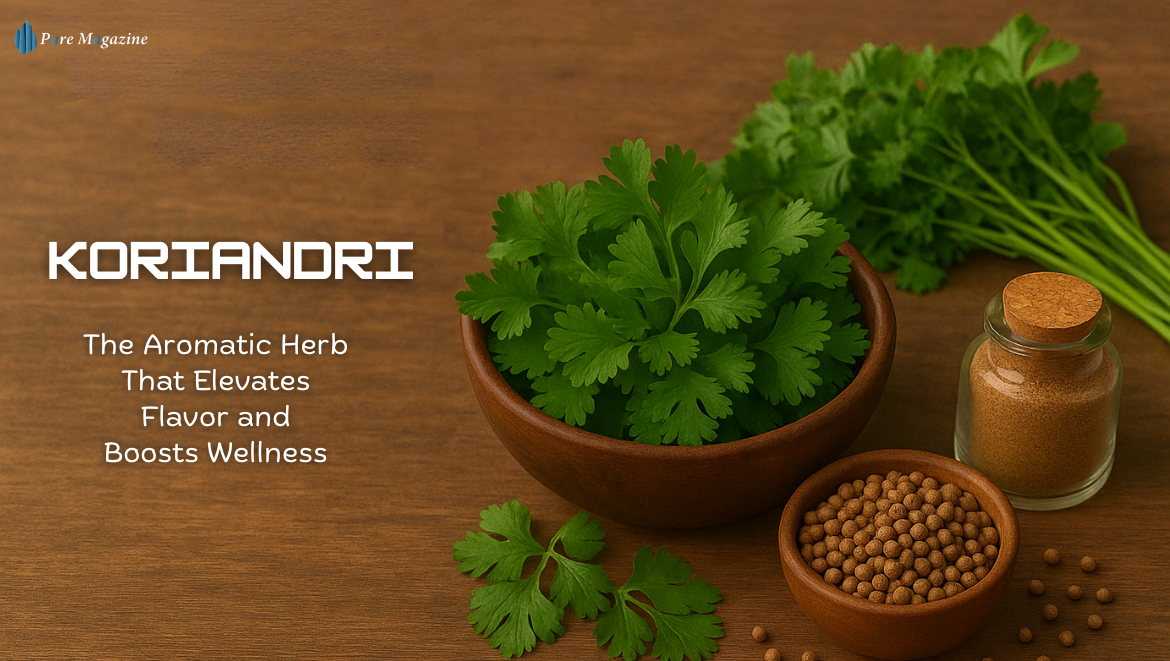Last week, I was staring at my sad, flavorless chicken curry and thinking, “Something’s missing.” I poked around my spice rack and found a tiny packet labeled koriandri. Honestly? I had no idea what it was at first. Turns out, I’d been using it for years—just didn’t know its proper name.
Once I dug into it, I realized I’d been seriously underestimating this little green powerhouse.
Wait…Koriandri? Is That Coriander?
Yep. Koriandri is just another name for Coriandrum sativum, the same plant people call coriander or cilantro depending on where you are.
- Fresh green leaves? That’s cilantro. Bright, citrusy, sometimes soapy if your taste buds are picky.
- Seeds? Those little brown balls we grind into spice mixes—that’s coriander seeds. Warm, nutty, a bit citrusy.
Same plant. Totally different vibes. And humans have been obsessed with it for thousands of years. Egyptians tucked it in tombs, Romans carried it across empires, and today it’s everywhere—from India to Mexico, Thailand to Morocco.
Why Koriandri Is Basically a Kitchen Superhero
Honestly, this herb is everywhere if you look for it:
- Middle Eastern magic: Ground seeds in falafel, hummus, stews…mix with cumin and suddenly your dish sings.
- Asian love: Fresh leaves in Thai curries, Vietnamese pho, and Chinese stir-fries. Add at the last minute for that punchy freshness.
- Latin vibes: Tacos, salsas, guacamole—you can’t cheat without it.
Pro tip: throw fresh leaves in too early, and you’ll kill that bright flavor. Toast seeds before grinding—they release all those aromatic oils that make your kitchen smell insane.
Growing Koriandri at Home (Yes, You Can)
I’m not a plant whisperer, but even I managed this.
- Plant it in cool weather—spring or fall. Heat makes it bolt fast.
- Seeds: soak overnight in a damp paper towel. Plant about ¼ inch deep.
- Water: keep soil moist but not soggy.
Within a week or two, you’ll see tiny green shoots. Snip the outer leaves for meals; let some plants flower and dry for seeds. Plant a few batches every few weeks to always have fresh koriandri handy.
Nothing beats tearing your own leaves straight into your curry or chutney. Honestly, it’s addictive.
Health Perks You Actually Care About
Beyond taste, koriandri is quietly doing good stuff for your body:
- Heart health: Coriander seeds may help manage cholesterol—lower LDL, keep HDL intact.
- Antioxidants: Compounds like quercetin fight oxidative stress. Your cells say thanks.
- Digestion: Seeds can reduce bloating and help settle your stomach after a heavy meal.
- Essential oils: Linalool in coriander oil is antimicrobial and calming. Some people even use it in teas or aromatherapy.
Heads up—it’s food, not medicine. But if you eat it regularly, it’s a subtle little boost for your health.
Cooking & Storage Tips
Here’s where most people blow it: fresh leaves die in your fridge after a couple of days.
- Fresh leaves: trim stems, put them in a glass of water, loosely cover with a bag. Or wrap in a damp paper towel and store in a container. Lasts 7–10 days.
- Seeds: keep whole until use. Grind fresh. Toast lightly to unlock flavor.
Also, don’t toss the stems—they’re flavorful! Chop them finely for sauces or marinades. No waste, max flavor.
Pairing ideas? Fresh leaves love lime, garlic, and chili. Seeds hang out with cumin, black pepper, and cinnamon. Simple, right?
Koriandri vs Parsley (Because People Confuse Them)
| Feature | Koriandri | Parsley |
| Leaves | Soft, rounded | Pointed/curly |
| Aroma | Citrus-y, strong | Mild, grassy |
| Flavor | Tangy, peppery | Light, subtle |
| Common in | Asian, Latin, Middle Eastern | European, Mediterranean |
| Health perks | Heart, antioxidants | Iron, folate, vitamin C |
If in doubt, just smell it—parsley whispers, koriandri shouts.
Quick Ways to Level Up Your Cooking
- Blend leaves, garlic, lime, and olive oil for a quick sauce. Toss on grilled meat or roasted veggies.
- Toast seeds and crush them into rice, curries, or roasted veggies.
- Sprinkle fresh leaves at the very end of cooking—keeps them bright and aromatic.
Seriously, just a handful transforms weeknight meals into something you’d brag about.
FAQs
Q1: Is Koriandri the same as coriander or cilantro?
A: Yes! Koriandri, coriander, and cilantro all come from the same plant, Coriandrum sativum. The fresh green leaves are commonly called cilantro, while the dried seeds are known as coriander. This aromatic herb is widely used in Middle Eastern, Asian, and Latin cuisines, making it a versatile addition to any kitchen.
Q2: Can Koriandri be grown at home?
A: Absolutely. Koriandri is easy to grow in pots, windowsills, or garden beds. It thrives in cooler weather and prefers consistently moist soil. With minimal care, homegrown koriandri provides fresh leaves for salads, salsas, and garnishes, and seeds for grinding into spice blends like garam masala.
Q3: Should I use the leaves or the seeds?
A: Both have unique uses. Fresh leaves deliver a bright, citrusy flavor perfect for finishing dishes, while coriander seeds provide a warm, nutty depth ideal for curries, soups, and spice mixes. Using both in cooking adds aromatic complexity to meals and unlocks the full potential of this herb.
Q4: What are the health benefits of Koriandri?
A: Koriandri is rich in antioxidants that help combat oxidative stress, supports digestion, and contains compounds that promote heart health. While it’s not a substitute for medical advice, incorporating koriandri leaves or seeds into meals is a simple way to add flavor and a natural nutrient boost.
Q5: How should I store Koriandri for maximum freshness?
A: Fresh leaves should be trimmed and stored in a glass of water or wrapped in a damp paper towel in the fridge, lasting up to 10 days. Whole seeds keep longer than ground ones—grind them just before cooking to maintain their aromatic oils and flavor.
Why You Should Never Overlook Koriandri
It’s cheap, easy to grow, versatile, and actually good for you. Different cultures have been celebrating it for centuries, and now it’s your turn. Sprinkle it, toss it, toast it, grow it…just don’t ignore it.
Next time you’re at the store, grab that bunch of fresh leaves or jar of seeds. Your taste buds will thank you. Your heart might even thank you. And honestly? You’ll wonder why this little herb didn’t get more hype years ago.
Visit: Pure Magazine








